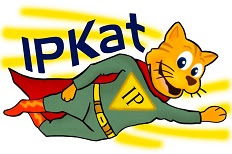
Patent Support Program: Arriva Mexico!
In developing an IP culture, Mexico is launching a ‘support program’. The idea is to assist inventors whose inventions may be capable of IP protection. To do so, the national IP office, IMPI, has united forces with the Mexico-United States Foundation for Science (FUMEC) and Nacional Financiera (NAFIN).
In general, it is highly noted that IP protection may contribute to the commercial activity in Mexico as well as its competitiveness in the collaboration with other countries. Therefore, the aim is to increase the number of patent applications and utility models and thus, adding value to the knowledge of inventors and entrepreneurs in Mexico.
With immediate effect the 2018 Call for he Patent Support Program is open (and valid until October this year).
What is this project about?
According to IMPI, the support offered ‘consists in providing specialized and free advice to Mexican developers’. It is directed at ‘entrepreneurs, independent inventors, researchers and entrepreneurs in the country, in order to provide them with tools for the protection of their inventions, their use and exploitation exclusively according to the Mexican legal framework.’
How does it work?
The services offered are:
• patentability analysis: examining the state of the art,
• advice regarding the writing of the application,
• delivery of workshops, among others.
It is open to the vast majority of sectors including IT, health, agriculture, environment, energy, to name a few.
Sources here and here.
In general, it is highly noted that IP protection may contribute to the commercial activity in Mexico as well as its competitiveness in the collaboration with other countries. Therefore, the aim is to increase the number of patent applications and utility models and thus, adding value to the knowledge of inventors and entrepreneurs in Mexico.
 |
| Diving in (Mexico great sport)...to the project...yas! |
What is this project about?
According to IMPI, the support offered ‘consists in providing specialized and free advice to Mexican developers’. It is directed at ‘entrepreneurs, independent inventors, researchers and entrepreneurs in the country, in order to provide them with tools for the protection of their inventions, their use and exploitation exclusively according to the Mexican legal framework.’
How does it work?
The services offered are:
• patentability analysis: examining the state of the art,
• advice regarding the writing of the application,
• delivery of workshops, among others.
It is open to the vast majority of sectors including IT, health, agriculture, environment, energy, to name a few.
Sources here and here.



















